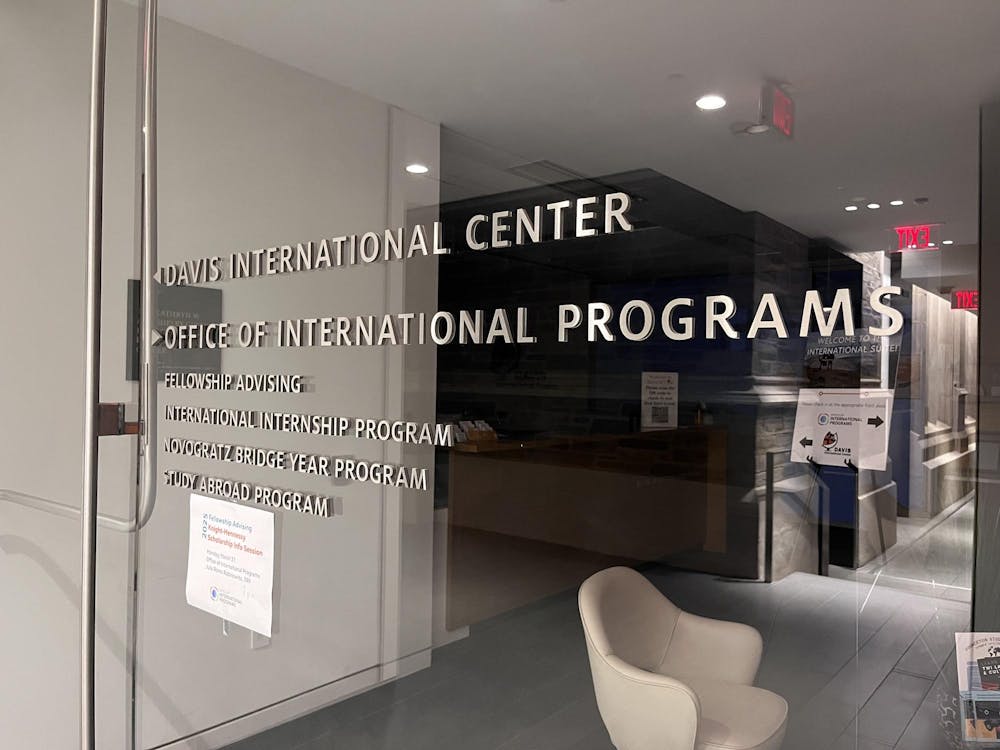Plans to reopen Cannon have been in the works since the DEC board purchased the clubhouse from the University in 2001, and president of the DEC board Warren Crane ’62 predicted that the club had a 50 percent chance of reopening in 2002.
Then, in May 2007, Crane told The Daily Princetonian that the club would be ready to open in February 2008.
In February 2008, however, he told the ‘Prince’ that the club would open its doors in February 2009, and last October, Crane announced that the date had been pushed back another year to February 2010.
Now, because of the economic recession, the club will open in February 2011 at the earliest, Wright said, noting that the downturn has affected the timeline of the club’s renovations both positively and negatively.
“Cost of construction has been cut as more contractors are actively bidding on the project,” he explained. “This is actually … positive for the club as the economic slowdown has affected the contractors as well.”
Letters to club alumni soliciting donations were scheduled to go out last September but were put on hold due to market uncertainty, Wright noted.
He declined to give an exact fundraising goal for the club but said it would not reopen until sufficient money had been raised to cover the significant renovations needed and also to establish a “reasonably sized” endowment.
“Several clubs have gone under beneath this roof, and we don’t think it’s appropriate to reopen unless we have enough of an endowment to weather a year or two of bad numbers in the future,” he explained.

The majority of the club’s renovations are still unfinished, Wright added, noting that the board still has to install an industrial kitchen, party area and dance floors.
Renovations will also include bringing the building up to code for fire safety and possibly also replacing the 35-year-old heating and cooling system.
Besides the costs of these renovations, the club also continues to pay an annual property tax of more than $60,000, Wright said.
The DEC board has not yet decided whether Cannon will be a bicker or sign-in club when it reopens, he added, noting that it is leaning towards holding Bicker.

“The reality is that the bicker clubs seem to have less volatility of membership year to year [than sign-in ones],” he explained. “Some of it will be determined by what the University looks like when we’re ready to reopen, though. If we were going to open today, it would probably be bicker.”
Board members have also not yet decided how the first group of new Cannon members will be selected if it does reopen as a bicker club, Wright added, noting that the size of this first group will also be crucial to the club’s future success.
“If [the first class is] too big, the club will suffer in following years by having to take a small section in subsequent years. If too small, the first year the club will seem empty and will lose money,” he explained.
Cannon, which closed 36 years ago, was founded in January 1895 by three members of the Class of 1896. At the time, it was the sixth eating club, following Ivy Club, Cottage Club, Tiger Inn, Cap & Gown Club and Colonial Club.
In the late 1960s, Cannon had a reputation for hosting wild parties: Sports Illustrated deemed it one of the top three “Jock Houses” in the country.
In 1968, Cannon members, aided by the two taprooms in the club’s basement, set a Houseparties record by consuming 52 kegs of beer in one weekend.
By November 1971, however, club membership had dwindled from about 95 members to 50, and the board decided to eliminate Bicker. When the switch did not bring in many more members, the club reinstated Bicker, which did not increase membership significantly either.
In October 1972, Cannon’s graduate board announced that the club would be closing at the end of the academic year.
Now, Wright said, the club is in search of new leadership.
“I’ve been on the board of directors for about 20 years … and I’m looking to reduce my involvement and find new and energetic alumni to pick up the torch for the final push,” he explained.







